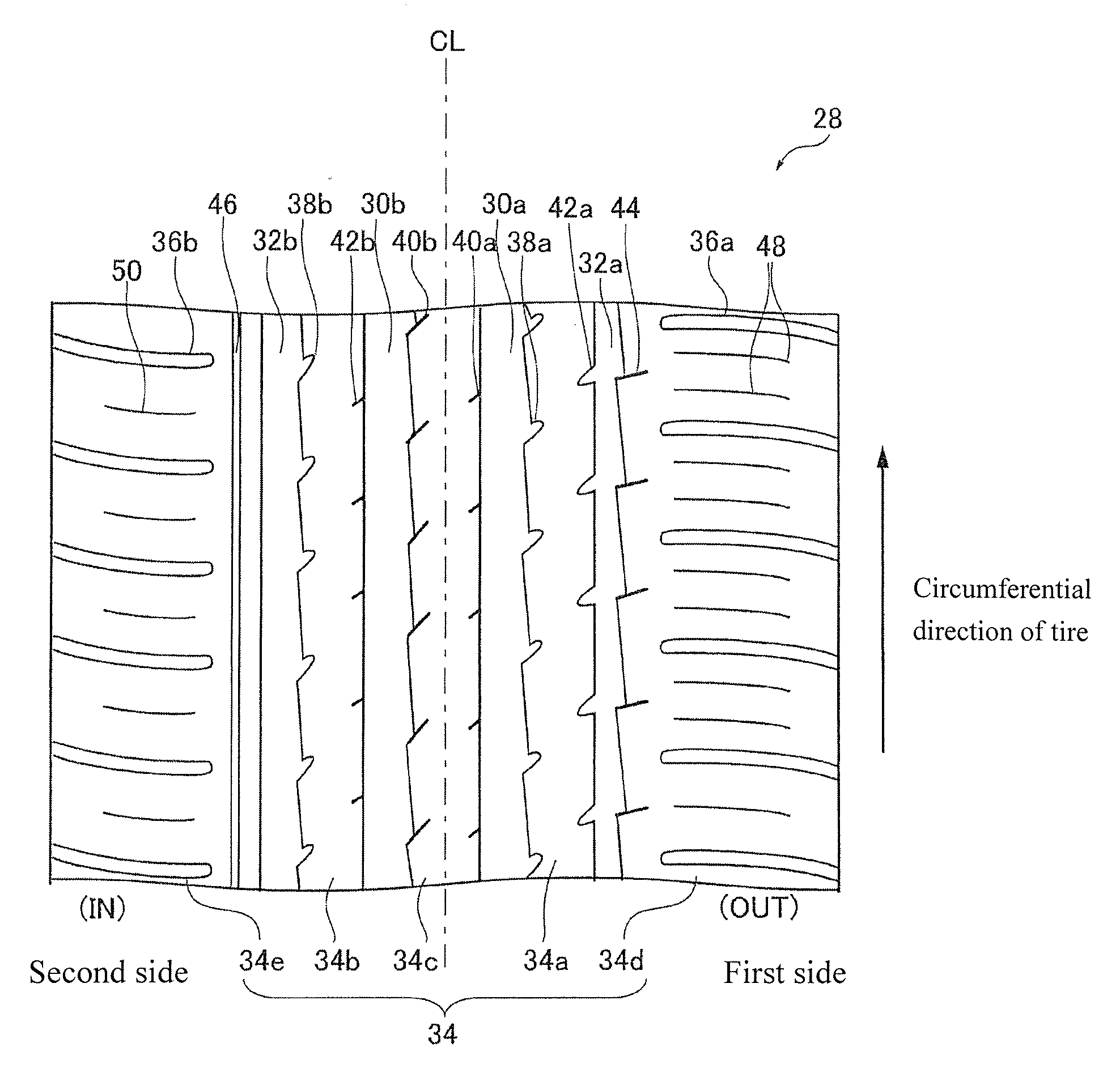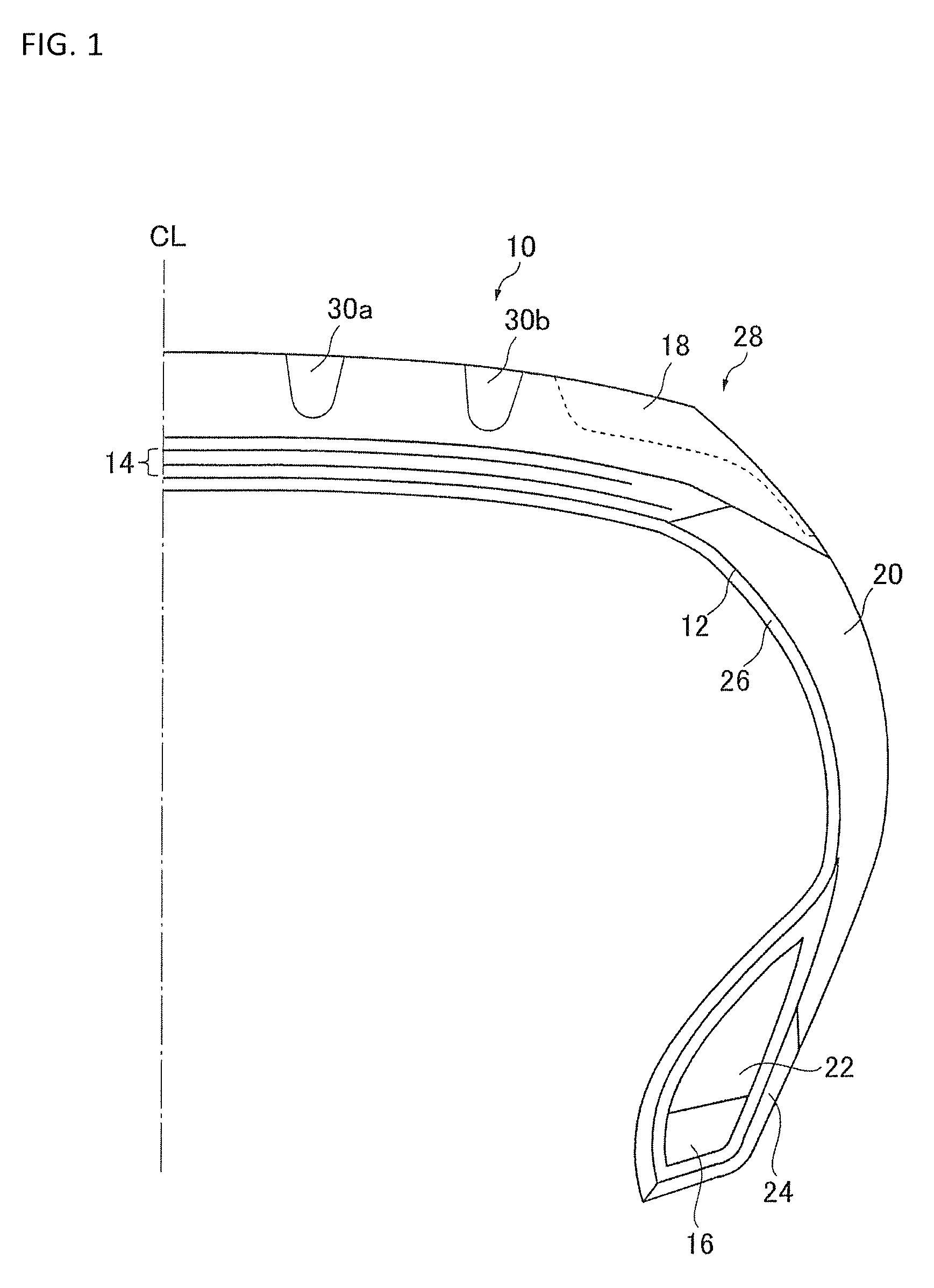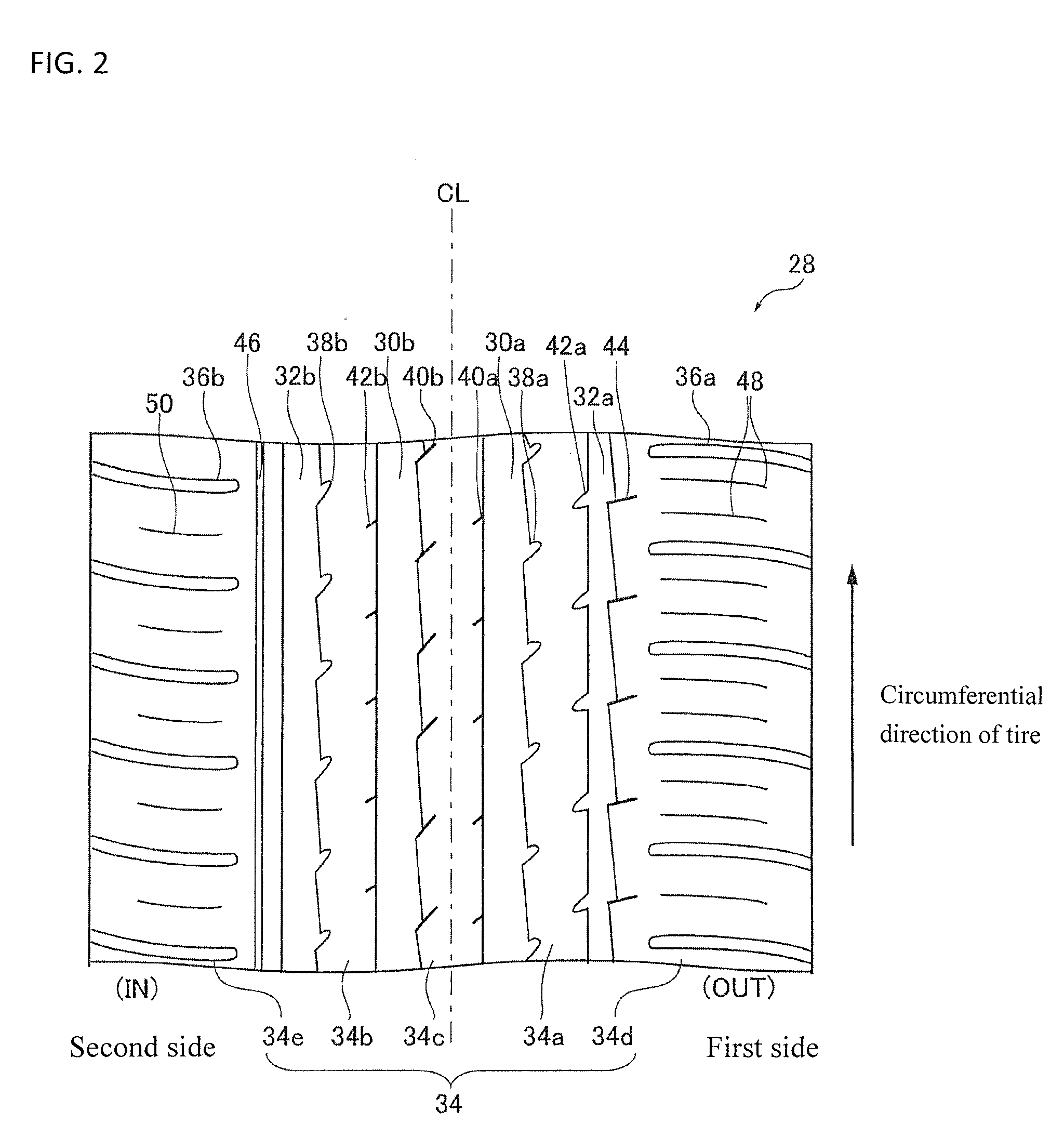Pneumatic tire
- Summary
- Abstract
- Description
- Claims
- Application Information
AI Technical Summary
Benefits of technology
Problems solved by technology
Method used
Image
Examples
working examples
[0050]In order to investigate the effects of a pneumatic tire according to the present invention, pneumatic tires having the same tire structure and tire cross sectional profile were fabricated with various tread patterns and installed onto a vehicle to evaluate steering stability performance on dry road surfaces (“dry steering stability performance”), steering stability performance on wet road surfaces (“wet steering stability performance”), riding comfort performance, wear resistance performance, and noise (“noise performance”). The tire size of the pneumatic tire fabricated was 245 / 50R18, and the rim size of the rim used was 18×8J. The air pressure of the pneumatic tire was set 240 kPa and the tire was installed on a vehicle having an engine displacement of 3.5 liters.
[0051]The dry steering stability performance was evaluated sensorily by a test driver driving from 0 to 250 km / hour on a test course having a dry road surface. The evaluation results were expressed as index scores s...
PUM
 Login to View More
Login to View More Abstract
Description
Claims
Application Information
 Login to View More
Login to View More - Generate Ideas
- Intellectual Property
- Life Sciences
- Materials
- Tech Scout
- Unparalleled Data Quality
- Higher Quality Content
- 60% Fewer Hallucinations
Browse by: Latest US Patents, China's latest patents, Technical Efficacy Thesaurus, Application Domain, Technology Topic, Popular Technical Reports.
© 2025 PatSnap. All rights reserved.Legal|Privacy policy|Modern Slavery Act Transparency Statement|Sitemap|About US| Contact US: help@patsnap.com



